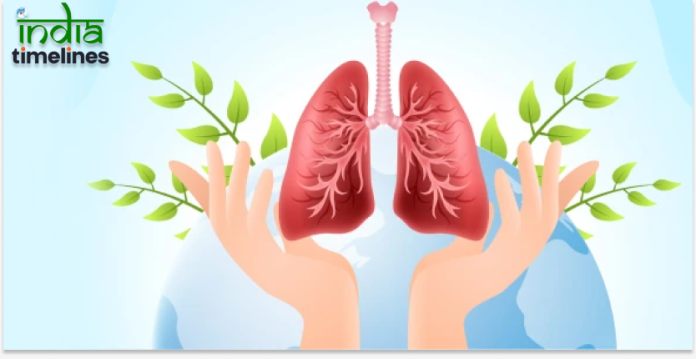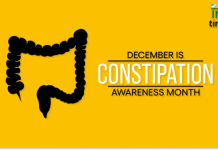
What is World COPD Day?
World COPD Day is an international event that takes place annually in November, aiming to increase awareness about Chronic Obstructive Pulmonary Disease (COPD). This event brings together healthcare professionals, patients, and advocates to highlight the global burden of COPD and promote better prevention, diagnosis, and treatment. COPD is a progressive lung disease that leads to difficulty breathing, and World COPD Day encourages everyone to take action, whether through supporting research, spreading information, or making lifestyle changes.
The Importance of Raising Awareness
Understanding Chronic Obstructive Pulmonary Disease (COPD)
COPD is an umbrella term for chronic lung diseases like emphysema and chronic bronchitis, which obstruct airflow and make it difficult for patients to breathe. The disease gradually worsens over time, and while it can be managed, there is currently no cure.
Global Burden of COPD
COPD is the third leading cause of death worldwide, affecting an estimated 328 million people. Many individuals with COPD remain undiagnosed due to the slow progression of the disease and the lack of awareness regarding its early symptoms. World COPD Day plays a vital role in shedding light on this often-overlooked condition.
Causes of COPD
Smoking as a Primary Risk Factor
Smoking is the number one cause of COPD. Long-term exposure to cigarette smoke damages the lungs, leading to inflammation, airway obstruction, and the development of emphysema or chronic bronchitis.
Environmental and Occupational Factors
Exposure to environmental pollutants, such as dust, chemicals, and fumes, can also contribute to the onset of COPD, particularly in individuals working in industrial or agricultural settings.
Genetic Predisposition
While smoking and environmental factors are significant contributors, a genetic condition known as alpha-1 antitrypsin deficiency can also increase the risk of developing COPD, even in nonsmokers.
Early Symptoms of COPD
Chronic Cough and Shortness of Breath
A persistent cough, often accompanied by mucus production, is one of the earliest signs of COPD. Shortness of breath, especially during physical activities, is another common symptom that worsens as the disease progresses.
Wheezing and Tightness in the Chest
Wheezing, or a whistling sound when breathing, and chest tightness can also indicate the presence of COPD. These symptoms often intensify during episodes of respiratory infections or exposure to irritants like smoke or dust.
Frequent Respiratory Infections
People with COPD are more susceptible to respiratory infections, such as colds, flu, and pneumonia. These infections can lead to exacerbations, or flare-ups, that cause a sudden worsening of symptoms.
Diagnosing COPD
Pulmonary Function Tests
Pulmonary function tests, including spirometry, are commonly used to diagnose COPD. These tests measure lung function by assessing how much air a patient can inhale and exhale and how quickly air can move in and out of the lungs.
Imaging Techniques (X-rays and CT Scans)
Chest X-rays and CT scans are often performed to detect signs of lung damage, such as emphysema, and to rule out other lung conditions like asthma or lung cancer.
Spirometry and Other Diagnostic Tools
Spirometry is a key tool in diagnosing COPD. It measures lung function by assessing the volume of air a person can exhale after a deep breath and the time it takes to fully exhale.
Treatment Options for COPD
Smoking Cessation
The most important step in managing COPD is to quit smoking. Smoking cessation slows the progression of the disease and improves the effectiveness of treatment.
Medications (Bronchodilators, Steroids, etc.)
Medications, including bronchodilators and inhaled steroids, are often prescribed to help open the airways and reduce inflammation. These medications improve breathing and decrease the frequency of exacerbations.
Pulmonary Rehabilitation Programs
Pulmonary rehabilitation involves exercise training, nutritional advice, and education to help patients manage their symptoms and improve their overall quality of life.
Oxygen Therapy and Surgery
For severe cases, oxygen therapy may be required to ensure the body gets enough oxygen. In advanced stages of COPD, surgery, such as lung volume reduction or lung transplantation, may be considered.
The Impact of COPD on Daily Life
Managing Symptoms and Flares
Living with COPD requires ongoing management of symptoms, including avoiding triggers that can cause flare-ups, such as air pollution and respiratory infections.
Coping with Emotional and Mental Health Challenges
The physical limitations caused by COPD can lead to emotional distress. Many patients experience anxiety or depression due to the chronic nature of the disease and its impact on their independence.
COPD and COVID-19
Increased Risks for COPD Patients
People with COPD are at higher risk of severe complications from respiratory infections, including COVID-19. Their already compromised lung function makes it more challenging to recover from illnesses that affect the respiratory system.
Precautions and Vaccinations
COPD patients are encouraged to take extra precautions, such as getting vaccinated against flu and pneumonia, and following public health guidelines to protect themselves from COVID-19.
Prevention Strategies
Reducing Exposure to Risk Factors
Avoiding smoking, wearing protective gear in hazardous work environments, and reducing exposure to environmental pollutants can help prevent COPD or slow its progression.
The Role of Public Health Campaigns
Public health campaigns aimed at reducing smoking rates, promoting clean air initiatives, and educating people about the dangers of COPD are crucial in the fight against this disease.
The Role of Patient Support Groups
Offering Emotional and Practical Support
Support groups provide a platform for COPD patients to share their experiences and find emotional and practical support from others who understand the challenges of living with the disease.
Connecting Patients with Resources
These groups also connect patients with healthcare resources, rehabilitation programs, and information on managing COPD effectively.
Ongoing Research and Advancements in COPD Treatment
New Medications and Therapies
Research into COPD treatments is ongoing, with scientists exploring new medications, therapies, and early detection techniques to improve patient outcomes and quality of life.
Advances in Early Detection Techniques
Early detection of COPD can significantly improve treatment outcomes. Researchers are working on new diagnostic methods to identify the disease at an earlier stage, when treatment can be more effective.
How to Support World COPD Day
Participating in Awareness Campaigns
Individuals can support World COPD Day by participating in awareness campaigns, whether through sharing information on social media or attending local events aimed at educating the public about the disease.
Donating to COPD Research
Donations to organizations dedicated to COPD research help fund vital studies that lead to new treatments and better understanding of the disease.
Spreading Information on Social Media
Sharing educational posts, infographics, and videos about COPD on social media platforms can help spread awareness and encourage others to learn about this preventable but incurable disease.
Living with COPD: Stories of Strength
Inspirational Patient Stories
Many individuals living with COPD have found ways to manage their condition and lead fulfilling lives. Their stories of resilience and strength inspire others facing similar challenges.
How Families and Caregivers Can Help
Families and caregivers play a crucial role in supporting COPD patients. Offering emotional support, helping with medical appointments, and encouraging healthy lifestyle changes are all important ways to assist loved ones with COPD.
A Global Call to Action
The Role of Governments and Health Organizations
Governments and health organizations must take a leading role in the fight against COPD by funding research, improving access to healthcare, and promoting public health campaigns aimed at reducing risk factors like smoking and pollution.
Promoting Research and Accessibility to Treatments
Advancing research and making treatments more accessible to all individuals with COPD is essential for improving the quality of life and life expectancy of patients worldwide.
Conclusion
World COPD Day 2024 serves as a vital reminder of the importance of raising awareness about Chronic Obstructive Pulmonary Disease. By educating the public, supporting research, and advocating for better healthcare policies, we can work together to combat the global impact of COPD. Whether you’re a patient, caregiver, or healthcare professional, your efforts on World COPD Day can help inspire change and provide hope for millions of people living with this chronic disease.
FAQs
What are the main symptoms of COPD?
COPD symptoms include a persistent cough, shortness of breath, wheezing, and frequent respiratory infections.
Can COPD be cured?
Currently, there is no cure for COPD, but treatment can help manage symptoms and slow disease progression.
How can COPD patients improve their quality of life?
COPD patients can improve their quality of life by quitting smoking, following a treatment plan, exercising, and participating in pulmonary rehabilitation programs.
What are the most common risk factors for COPD?
The most common risk factors for COPD include smoking, exposure to pollutants, and genetic conditions like alpha-1 antitrypsin deficiency.
Is COPD hereditary?
In some cases, COPD can be linked to genetic factors, such as alpha-1 antitrypsin deficiency, but most cases are caused by environmental factors like smoking.



































